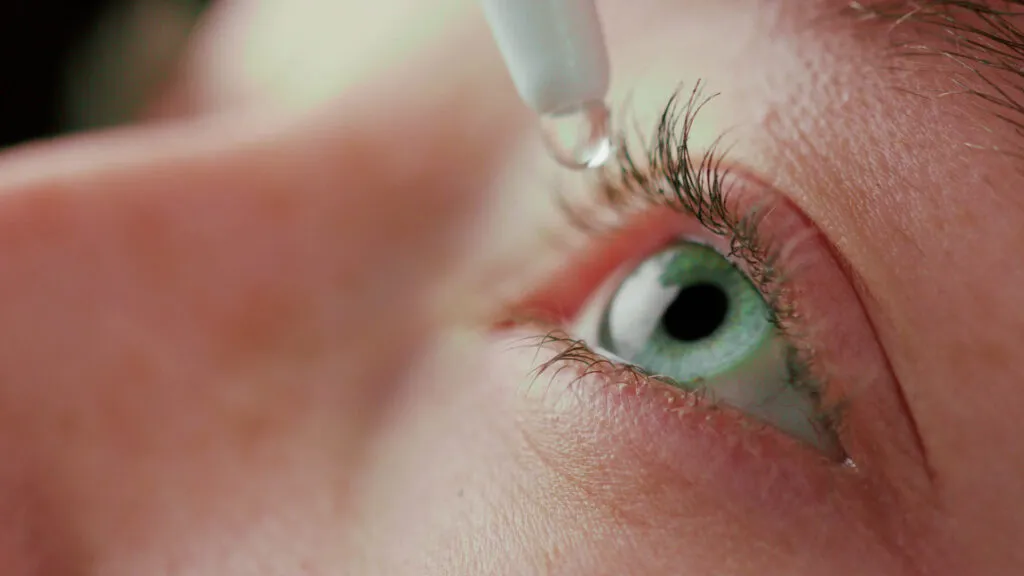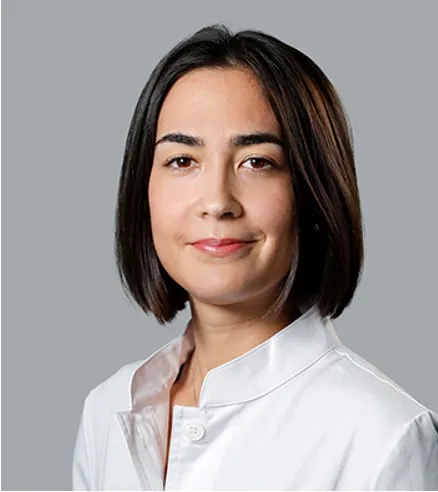
Eye drops with plasma rich in growth factors (PRGF), an ally against dry eyes
Dry eye syndrome is one of the most widespread eye conditions at present. Specifically, according to currently available data, around 30% of the population suffers from it and, more importantly, it is on an upward trend. Its multifactorial and complex nature, whereby each patient has a specific dry eye condition, requires a customised solution to ease its symptoms, but there are treatments that offer optimal results in most cases. Dr Ane Pérez-Sarriegui, head of the Miranza Begitek Dry Eye Unit, explains one of them, eye drops with plasma rich in growth factors.
What are PRGF (Plasma Rich in Growth Factors) eye drops?
PRGF eye drops are a blood-derived product, which is developed in the field of regenerative medicine and consists of platelet-rich plasma extracted from the patient’s blood and enriched with growth factors. It is used in ophthalmology to promote the tissue repair on the surface of the eye, stimulate cell proliferation and optimise healing and tissue regeneration processes. Also known as PRGF eye drops, they are administered in the form of drops and are manufactured at the Miranza clinics. Its most important features are as follows:
· They are formulated with the same pH and features of natural tears to make them safer and more effective when applied to the tissues of the ocular surface.
· They feature an optimal concentration of platelets and allow a controlled release of growth factors to prolong the effect.
· They are free of leukocytes to avoid pain, swelling and discomfort associated with these blood components.
This type of bioengineered product has also proven effective in other areas, such as dentistry, traumatology, aesthetic medicine or dermatology. Moreover, autologous serum has become a very common post-surgical resource to promote wound and ulcer healing.
How are PRGF eye drops made?
Specialists obtain PRGF by extracting the patient’s blood, in an amount similar to a blood test, and then centrifuging it to achieve both separation and optimal concentration of the platelets. This generates a product with a high concentration of growth factors, i.e. proteins that are essential in the repair and regeneration processes of all tissues in the human body. We then place the solution in special ovens and finally distribute the plasma eye drops obtained into 32 small dropper bottles, which the patient must store and use according to our instructions. In total, the PRGF eye drops take about two hours to produce and provides not only an effective dry eye treatment, but also a truly convenient solution. More specifically, each PRGF bottle can be kept at room temperature for three days without refrigeration, so you can take it with you in your daily life or even on a trip. You can also keep it frozen for a period of three months, which is a great advantage for preparation and storage at home.
Who can benefit from PRGF eye drops?
PRGF is indicated for eye diseases involving damage to the tissues of the eye surface susceptible to regeneration with growth factors, such as mild and severe dry eye, disorders affecting the innervation of the cornea, persistent epithelial defects (set of diseases that lead to ulceration or peeling of the corneal surface) and different types of corneal injuries, such as recurrent keratitis, corneal ulcers, burns, abrasions and accidental wounds. Furthermore, it has also shown its effectiveness in the treatment of ocular surface issues secondary to glaucoma eye drops.
More specifically, PRGF is used in ophthalmology to repair the damaged ocular surface, reduce swelling in the area, ease associated pain, lubricate the ocular surface and protect it from infection through its antibacterial effect. Specifically, the most advanced studies have shown that the correct application of these drops for dry eye and other eye conditions reduces the formation of corneal scars by up to 80%, which significantly improves the visual prognosis of patients.

How do you apply PRGF eye drops for dry eyes?
The first step in applying PRGF dry eye drops is to clean your hands. This is to prevent infection of the eye area. The patient should then tilt their head back and look up, as well as use one finger to pull down the lower eyelid to create space for the application. Once these conditions have been achieved, hold the bottle of PRGF eye drops close to the eye without touching it and squeeze a drop into the conjunctival sac, i.e. the space between the eyelid and the eye.
Once applied, it is important to close the eye very gently for a few seconds to allow the eye drops to spread evenly over the entire ocular surface. One more recommendation: Excessive blinking or rubbing of the eyes after application should be avoided, as this could reduce the effectiveness of the treatment. As for the frequency of use and the duration of treatment, the ophthalmologist’s instructions should be followed, as our job as experts is precisely to customise treatments to suit the needs of each patient at any given time. Finally, follow-up visits are necessary.
What evidence and clinical studies support this treatment?
Treatment with autologous PRGF eye drops for dry eye is a state-of-the-art treatment. However, there are already several studies underpinning its effectiveness. One of the most important studies, carried out by specialists at the Arnau de Vilanova-Llíria Hospital in collaboration with 24 patients, concluded that “in 75% of cases the clinical evolution was favourable after three months” and that in terms of symptoms “100% of patients perceived an improvement in eye dryness, 80% in discomfort in the presence of light and 60% in pain“. However, let us not just look at the numbers: We are talking about a treatment that improves people’s quality of life.
Can these plasma eye drops have any side effects?
Like any other medical treatment, the application of plasma eye drops may trigger certain side effects, including eye irritation, redness and, in much more unusual cases, episodes of blurred vision or allergies. However, based on both the percentage incidence of these side effects and their severity, this treatment is considered very safe, largely due to the fact that growth factor-rich eye drops are prepared with components from the patient’s own blood. In any case, follow-up appointments should be used to inform the ophthalmologist of any discomfort.